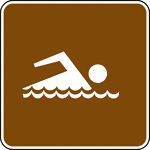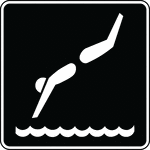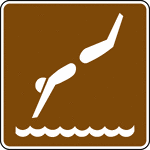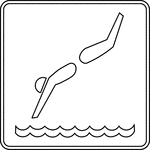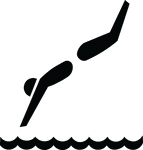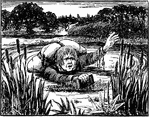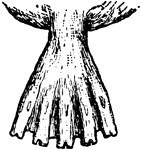
Velvet Crab
The velvet crab (alternatively velvet swimming crab or devil crab) is the largest swimming crab found…
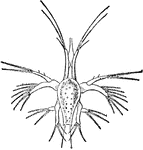
Nauplius of a Prawn
A nauplius (plural nauplii) is the first larva of animals classified as crustaceans (subphylum of Arthropoda).…

Upside-down Catfish
Upside-down catfish, Synodontis nigriventris, is a species of catfish. It's particularly noteworthy…

Medusa of a Hydroid
Colonial, plant-like animals closely related to jellyfish, with stinging cells, Any member of the invertebrate…

Storm Petrel Swimming with Reflection
The storm Petrel "of the Mediterranean and North Atlantic from Greenland to South Africa, which breeds…
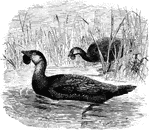
Two Musk Ducks Swimming between the Tall Grass in a Lake
Biziura lobata, (Musk Duck) of Tasmania and Australia -except the north-is brown with buff mottlings,…
Vorticella
The Bell Animalcule (Vorticella) (fig 10) in certain respects resembles the Slipper Animalcule. It is…
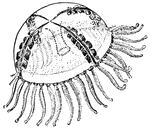
Gonionemus Jellyfish
Gonionemus is a type of hydrozoan related to jellyfish. It uses adhesive discs near the middle of each…
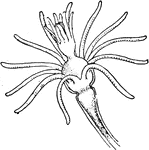
Gonionemus Jellyfish
Gonionemus is a type of hydrozoan related to jellyfish. It uses adhesive discs near the middle of each…
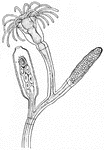
Gonionemus Jellyfish
Gonionemus is a type of hydrozoan related to jellyfish. It uses adhesive discs near the middle of each…

Gonionemus Jellyfish
Gonionemus is a type of hydrozoan related to jellyfish. It uses adhesive discs near the middle of each…
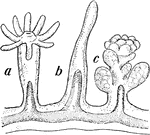
Hydroid Jellyfish
Hydroids, related to the jellyfish, have three basic life-cycle stages: a tiny free-swimming planula…
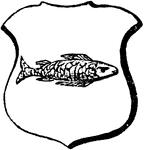
Naiant
"Argent, a salmon proper, naiant, its head towards the sinister side of the shield. NAIANT. A French…

Swimming, Black and White
This sign is uses to indicate that a recreational swimming area is located nearby.
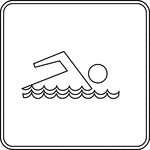
Swimming, Outline
This sign is uses to indicate that a recreational swimming area is located nearby.

Swimming, Silhouette
This sign is uses to indicate that a recreational swimming area is located nearby.

Morte D'Arthur
Morte D'Arthur is an illustration that was created by English illustrator Aubrey Beardsley. It depicts…

Avocets
"Recurvirostra. Avocets. Bell slender, more or less recurved, then the upper mandible hooked at the…

Coot Head
"Fulicia. Coot. Bill and frontal plate much as in the Gallinultes. Body depressed; the under plumage…

Boy Diving into a River at Sunset
A scene illustrating a young boy jumping off of a diving board into a river. In the distance there is…
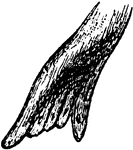
Foot of Seal
"Foot of the seal, which opens and closes in the act of natation, the organ being folded upon itself…

Salmon
"The salmon swimming leisurely. The body, it will be observed, is bent in two curves, one occurring…
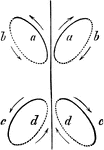
Ellipses of Swimming Frog
A diagram showing the motions a young frog makes while swimming. In this stage of life, the frog makes…

Loops of Swimming Frog
A diagram showing the motions a young frog makes whilst swimming. In this stage of the frog's life,…

Swim Lines of Frog
A diagram demonstrating the motion a frog makes whilst swimming. In this stage of the frog's life, the…
Overhand Swimming
"The overhead movement enables the swimmer to throw himself forward on the water, and to move his arms…
Side-Stroke Swimming
"An improvement on the foregoing for long distances is the known as the side stroke. In this method,…

The Turtle
"The turtle, adapted for swimming and diving, the extremities being relatively larger than in the seal,…

Crested Newt
"In the newt a tail is superadded to the extremities, the tail and the extremities both acting in swimming."—Pettigrew,…

Little Penguin
"The Little Penguin, adapted exclusively for swimming and diving. In this quaint bird the wing forms…
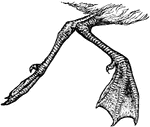
Swimming Swan
"Swan, in the act of swimming, the right foot being fully expanded and about to give the effective stroke,…
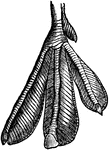
Foot of Grebe
"In this foot each toe is provided with its swimming membrane; the membrane being closed when the foot…

Flying Fish
"The Flying fish, with wings expanded and elevated in the act of flight. This anomalous and interesting…
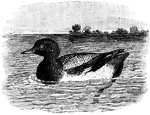
Scaup, a Common Duck
"A duck, Fuligula or Fulix marila and related species. The common scaup inhabits Europe, Asia, and North…

A Black Scoter Swimming
Melanitta americana or Œdemia nigra A large sea-duck of the genus CEdemia, belonging to the subfamily…

Seal Swimming up to an Igloo
Illustration of the entrance of an igloo, built out of ice, partially underwater. A seal is swimming…
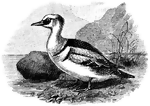
Smew - A Merganser or Fishing Duck
Mergellus albellus. "A small merganser or fishing duck...The male in adult plumage is a very beautiful…


